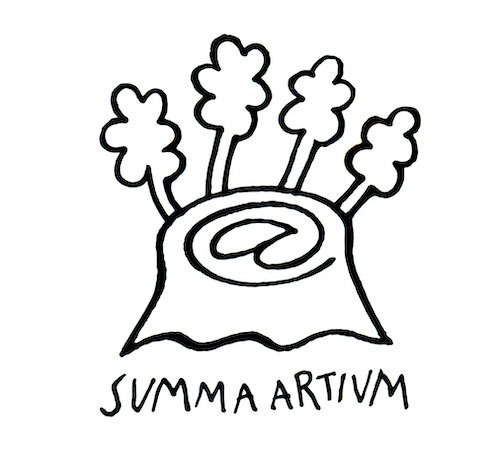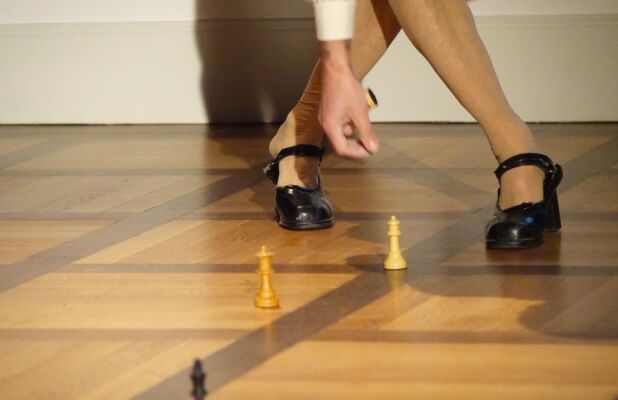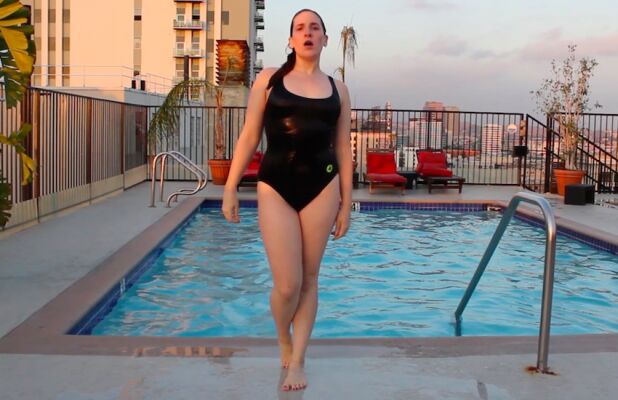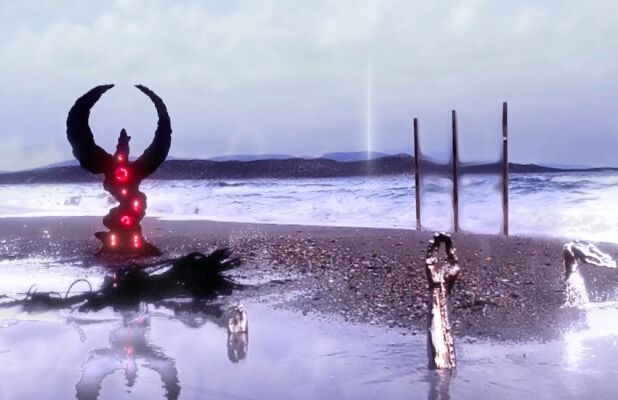Gold und Liebe III. – Lessons from Mutants
A conversation with Tina Kult and Ágnes Várnai on collaborative storytelling, contemporary shamans and looping narratives
The (new) Constellation, the T(n)C was founded in 2017 by Ágnes Várnai and Tina Kult. They live and work in Vienna and experiment with a wide range of media, including virtual reality, 3D, installation and fashion. By combining the different disciplines, they are researching immersive experiences to connect the digital and physical levels of realities. T(n)C believes in the power of joint efforts. Their aim is to expand the practices of collective storytelling with a collaborative approach.
Tina Kult (1991, Semipalatinsk, KAZ) is a media artist who lives and works in Vienna. She studies Digital Art at the University of Applied Arts Vienna and spent a guest year in the experimental film class at the UdK Berlin. She experiments in her work with a wide range of media such as virtual/ augmented reality, 3D, or animation. Among others, her work has been shown at Kunstraum Niederösterreich, Vienna (2018), Krinzinger Projekte, Vienna (2017) and Art+Text, Budapest (2017).
Ágnes Várnai (1990, Dunaújváros, HU) graduated from the University of Applied Arts Vienna in 2017, with a master's degree in fashion. A comprehensive theme of her work is the exploration of the hidden myths of our time. These narratives are tied to everyday rituals that are rooted in a social medium, a consumption habit, or a chosen lifestyle. In recent years, her works have been exhibited at the Knoll Gallery in Budapest, the Kunstraum Niederösterreich and the U10 Gallery in Belgrade, among others. In 2018, Várnai became a member of the Young Artists' Studio Association. In the same year, she participated in a 3-month residency program in Pforzheim, Germany.
Ráhel Anna Molnár: Would you tell me about how you initially started to work together and what does it mean to you to exist as a collective?
Ágnes Várnai: We met in 2017 in the Angewandte where we were both studying at that time. I was in my final year at the fashion department and I was already really tired of the dull and rigid system of this class. I decided to build a computer game out of my diploma collection, so I looked for people to team up with me for this project. Tina was known for her surreal, humorous animation style in the digital art class, so I was really happy when she said she is up for the collaboration. We pretty much clicked from the beginning. It didn't even matter that the original game idea never got finished… We have kept on working together ever since. We both had a different rhythm and way of creating back then (probably due to the different disciplines we come from), but I think during the last 3 years we adopted into a new working style, which fits both of us. To be honest that's what it means to work in a collective for me. We both have very different skill sets and personalities so there will always be something new to learn from each other.
Tina Kult: Learning from each other is a really good point you are making here. For me, to exist as a collective means, at least in our case, to surrender to a great urge. Agnes and I are very driven people. We push each other to the limits of our thinking. We are in constant constructive criticism and motivation towards each other and it often feels like a great adventure.
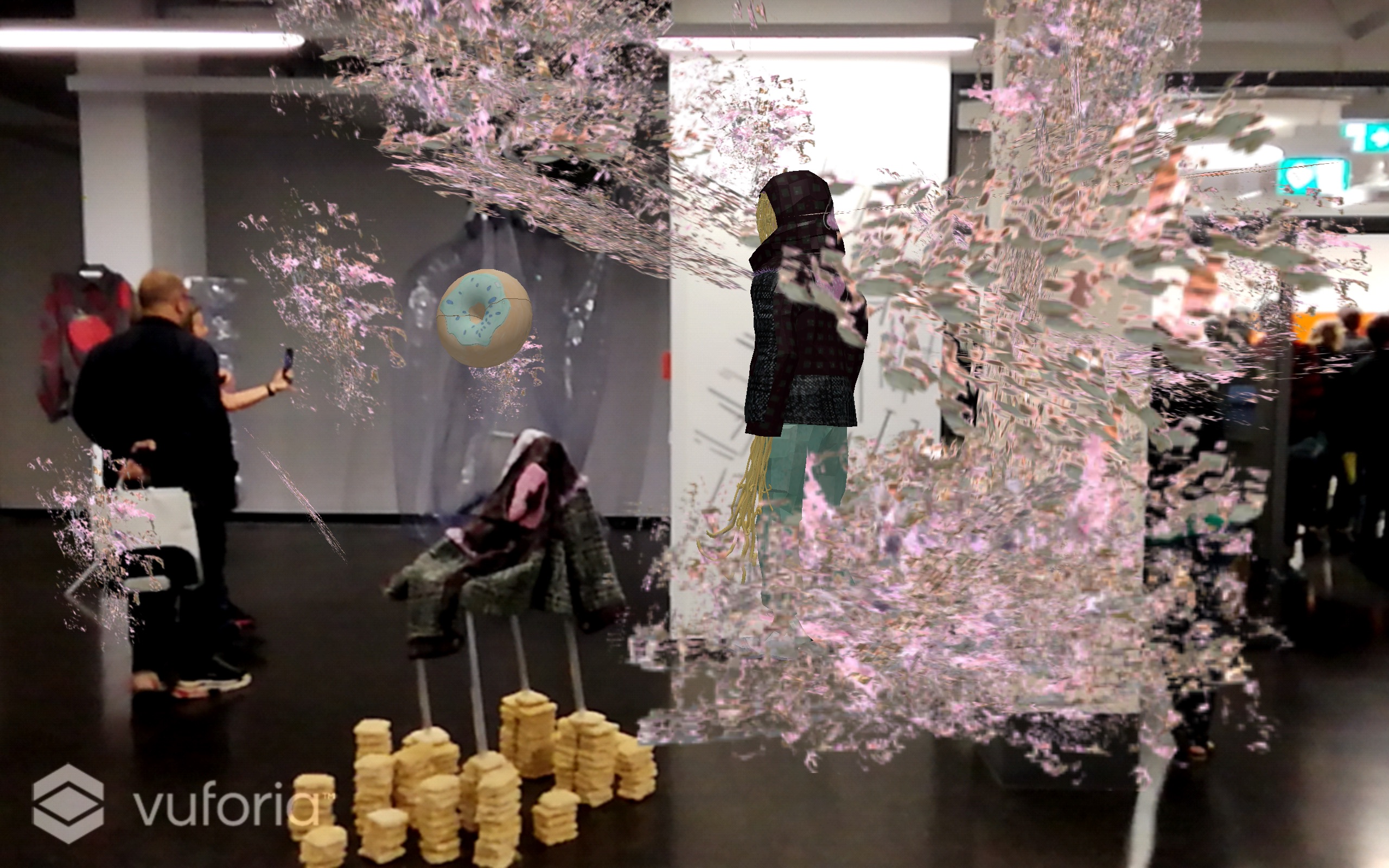
How about your name: The (new) Constellation?
T. K.: The name The (new) Constellation is actually derived from the working process of the Glue in Reality (GIR) series. It is a fragment of our discussions about religions, their institutions, spirituality, and its marketing. GIR was conceptually designed as a movement, so The (new) Constellation was the name of this society we created. And we became its followers. In the beginning, it was not an issue for us to form a collective. But after GIR we just kept working and it seemed logical to officially join together. We just took the name with us.
A. V.: We felt like our future works will still be rooted in the world we created in the GIR project so it felt right that we will carry something with us from it further into the next projects. There is a tendency with us, that we are working so much on a narrative level that you can understand our line of work as one big saga.
The idea of the video game ended up in Glue in Reality – a project that builds on contemporary lifestyle trends as complex belief systems with criticality and humour, both in the physical space, through installations and in the augmented reality of five different characters – shamans, priests and prophets –, who rule this culture. Could you tell me about them and the whole project?
T. K.: It seems to us that we are in a kind of transition in our spiritual thinking. Especially in our generation we observe a departure from traditional beliefs. The saying ‘I don't believe in anything’, sometimes even a condemnation of the word ‘belief’ itself, was our motivation to start this work in the first place. We don't think that faith has left us, but that our priorities and therefore our spirituality have changed. With GIR we created a platform to reflect on the questions ‘What do you believe in? Which of your activities can perhaps be compared to some kind of faith? Which one do you give time and dedication to?’ Many areas of life have come to our minds in which people develop something like daily rituals and a strong faith. Nutrition is a very good example of this. What is healthy for you? How much time and thinking do you spend with your digestion and your well-being.
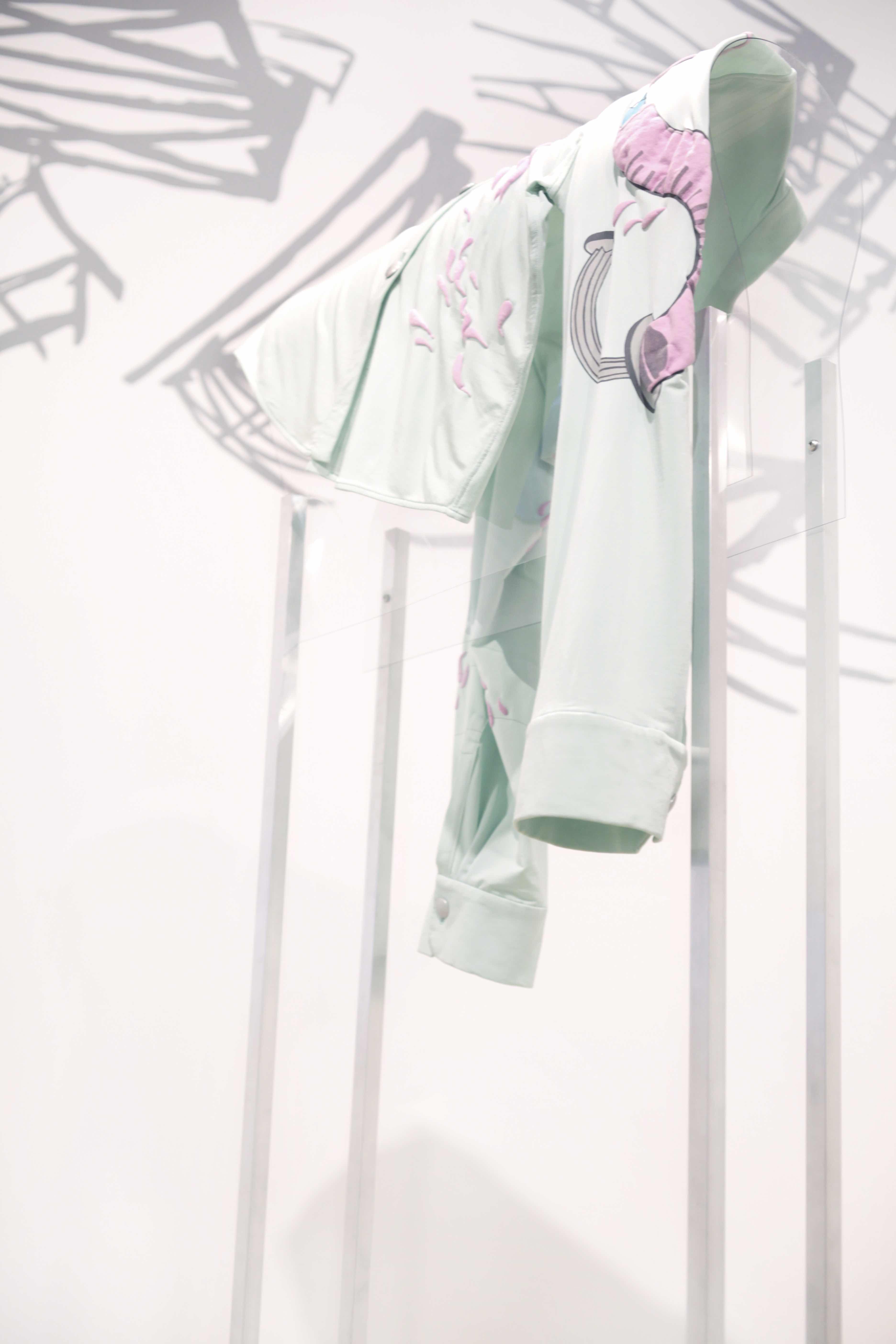
The beauty industry is another example - which ideal of beauty do you follow and what do you do to get as close as possible to it? What do you do to feel 'good in your skin'? I would say these are the most common examples, but of course there are more trends and ideologies. We mainly focused on the topics of data, diet, beauty, capital or collecting. But the larger concept is that, in line with the trends, their prophets also appear in the world as idols of their movement. All these areas have a common thread for us. On the one hand, they are set up in a kind of lifestyle that shapes you and with which you identify yourself. On the other hand, they are very much driven by the connections on social media. The possibility to exchange with others, or even to share your knowledge and be the leader of a movement, makes it easy to follow these trends.
A. V.: I guess it can be confusing, to understand what the GIR series is. Technically they are 6 multimedia installations created under the same concept. Each consists of a physical and a virtual level. An important part of the physical level is always a large wall trigger which serves as a door opener for the virtual world. The visitors could download our app on their smartphones or tablets or use the device we provided during the exhibition, and when they opened the app and pointed the camera on the trigger, the AR (augmented reality) world appeared, interwoven with the physical installation. It even has a participatory, almost performance like element. Because when you take your smartphone to observe the virtual sculptures you have to lift your hand rather high and this gesture feels like praying, and when you do it right, the digital deities of the GIR appear to you and they start to speak. The complexity of the work makes it also difficult to document it too.
There is a strong (yet playful) sense of capitalist critic, that of linear narratives of expansion in your work. Still you’re dealing with an archetypal figure of the hero – the hero is the par excellence chosen one; the one that saves or destroys others, who is inseparable from one ultimate goal that s(h)e has to accomplish in order to have the narrative fulfilled. An essentially modernist figure. So, how do you relate to this persona?
T. K.: While working on GIR, we discussed much more about iconographic representations in different religions and spiritual movements and integrated them into our concept. In GIR we play with such an iconographic representation of the prophets, who for us are nothing more and nothing less than the pure representation of their own trend. In other words, they are created and exist only through the actions of the masses, and disappear again in the same way as soon as people move into another flow. But the archetypal figures then became very important in the next works.
A. V.: It's true that the GIR characters were more meant to symbolize an iconography rather than an actual persona. But to be honest, I could always relate to their distorted, dissolving or overstretched bodies, and their wide open, ecstatic eyes. I do feel just like these caricatures on some days, when I notice what mad ideals I have been chasing after the whole week.
T. K.: I think that this identification with the figures also constitutes the part of the work that is critical of capitalism. That you ask yourself: What do I actually spend my time with? How did I come to believe that this is exactly the right thing for me now?
You’re currently working on your second bigger scale project. Just as Glue in Reality, The Tent also appears in chapters – The Tent, The Beast, Lessons for Mutants; this kind of thinking links to your projects to a sphere of archaic storytelling, folklore and fairy tales.
T. K.: In the case of the film we created a story about two protagonists who try to break out of their dystopian world to search for a mythical place. To enter this place, they go through different acts of transformation. We used narrative elements of traditional fairy tales to guide them through their tasks until they find themselves in a virtual landscape of their own transformed bodies, deep inside their own hazed selves. The installation moves in the same environment. The protagonists, however, are no longer the film characters, but the viewers themselves. We also play with a certain virtuality in the materiality itself. There are large strands between the film and the installation, since they really were created from the same seed.
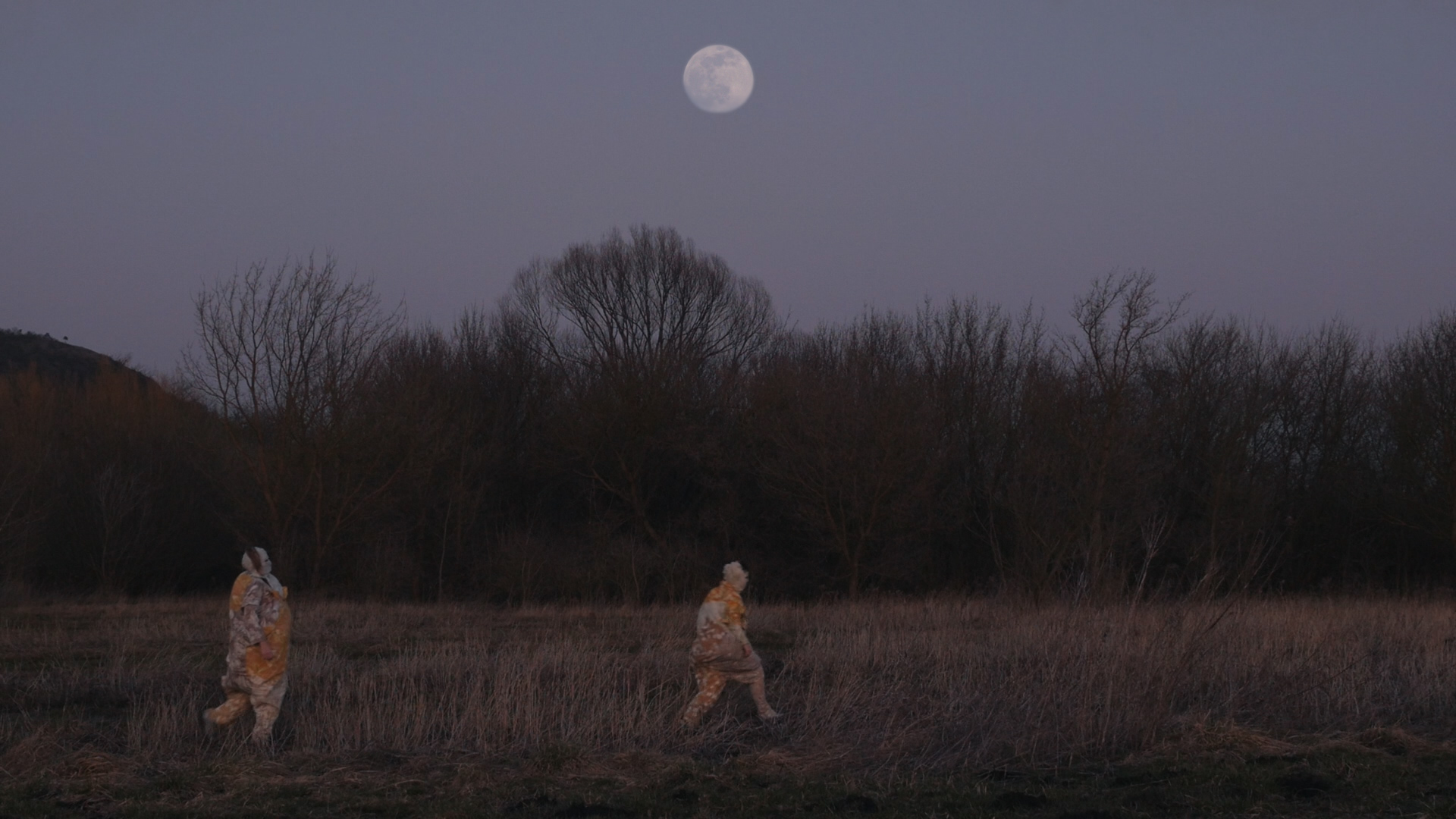
This is a beautiful expression: sphere of archaic storytelling. I think Agnes and my way of working always starts with us circling around a big theme. We talk a lot about it, and have first quick ideas. This big topic then quickly divides into several projects, so we create many works from the same world. I think we have a lot of fun doing this. In a way we are both passionate storytellers.
A. V.: I think we are more than one year now in this new chapter (The Tent), so by now we have many works completed or almost done. In the core of this project is a film we shot partly in Hungary and partly in Vienna, and a large installation. But there is also a small photo series we did (Lessons for Mutants) , some virtual sculptures are also coming up, maybe some prints… In our understanding The Tent is a phenomenon. The idea of it is inspired by the hyper object experience. So, The Tent is a sensation actually, which looms over us, affects our daily life and has an existence in time and space, but we can still not experience it in its fullness.
The two characters of The Tent story are born into a rather dystopian world, a drought, which is a place of division and loss of faith. So, we could actually understand it as a post GIR state. This dark void where one finds him or herself after their belief system or world order is shaken was the starting point for the whole project. We are going to show the film and a virtual sculpture in the online exhibition called NEW FUTURE organized by Brno based Industra. And next year February we´re gonna have our first bigger solo show in the Viennese Waf gallery where the film and the installation will be displayed among other smaller works.
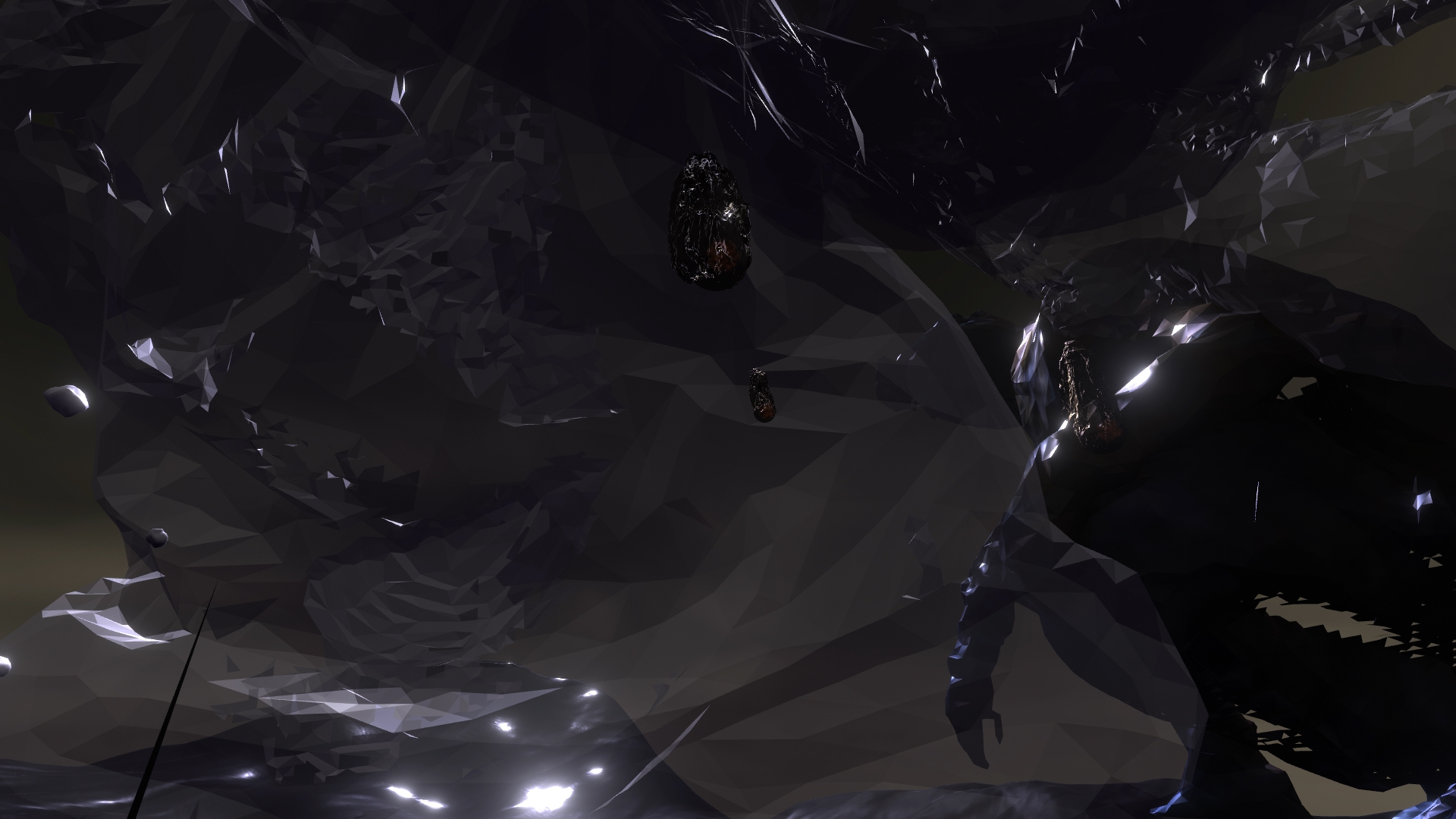
Can you grasp how the search for this mythical feels like?
A. V.: For me the mythical space is actually the rare moments when you are able to break out of your own patterns. You find yourself in a place when it feels like you have endless possibilities. It's for sure an intense feeling. This only happened with me on a few occasions and it was always connected to rather darker times.
T. K.: I believe this place can also be a journey that you take regularly and very consciously. Our own journey in the working process of The Tent was also much more personal. We talked incredibly much about our own demons, exchanged experiences about how we encounter them. That was often very intimate, and I think you can sense parts of it also in the work
Is this void the actual final destination of the two seekers – probably without them being aware of it?
T. K.: I would describe the void as a temporary state in which one finds oneself. To meet this void is something like a test of courage, because the encounter with oneself can be a really unpleasant thing.
A. V.: I would say it's a destination, but I wouldn’t see it as final destination. The movie is actually a loop, indicating exactly that.
This article was created with the support of Summa Artium.
